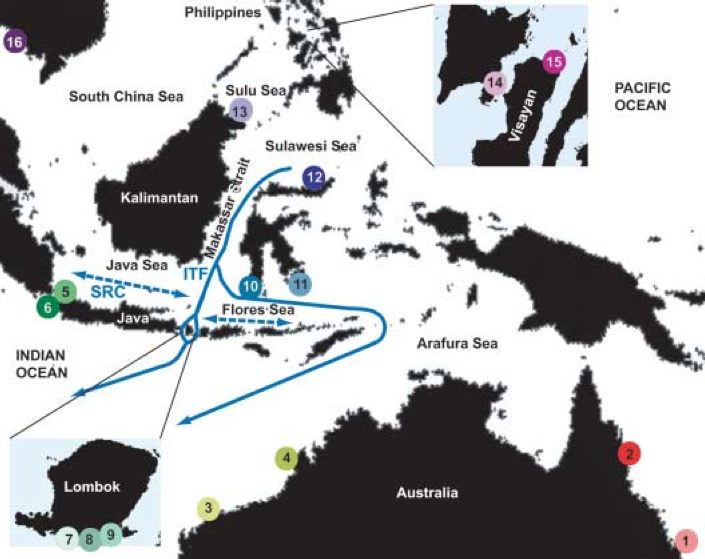Overview
Description
Distribution
Life History & Behaviour
Feeding Experiment
Cyclicity
Evolution & Systematics
Fossil History
Morphology and Physiology
External Morphology
Wikipedia
References & More Information
Bibliographies | Distribution
The haliotid family has a global distribution along coastal waters of all continents (miller at al 2009, Lindberg 1992). They occur from the intertidal zone to a depth of 400m (Lindberg 1989). H. asinina distribudid through out the indo-pacific region (McNarnara and Johnson 1995). Hard substrates in shallow water of 1–7 m depth (Jarayabhand & Paphavasit 1996).
In a phylogenetic study by Imron et al (2006) it was found that H. asinine had a Pleistocene-driven phylogeographical discontinuity across its home range. The eastern Australia samples showed strong divergence from the indo-Malay Archipelagoe samples. This demonstrates a strong long standing dispersal barrier. They went on to find a corrilation between estimated time of divergence and late Pleistocene glaciations and put the divergence down to the land barriers between that were formed during this time between the northeastern Indian Ocean and the western Pacific Ocean.
|
|

Figue 1: A map of the Indo-Pacific the number denote the collection areas of a genetic population structure by Imron et al. (2007) structure study."1 and 2 represent Eastern Australia (Pacific Ocean) populations, 3 and 4 represent Western Australia (Indian Ocean) populations, and 5–16 represent Indo-Malay Archipelagoes populations..... The two major currents of the Indo-Malay region, with flow direction indicated by arrowheads........ITF, Indonesian Throughflow current, solid line; SRC, Seasonal Reversing Current, dashed line." Adapted from Imron et al. (2007) |
|
|
|